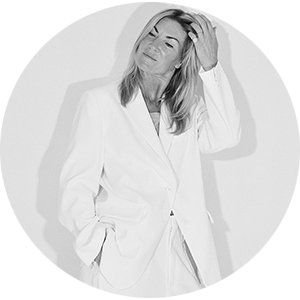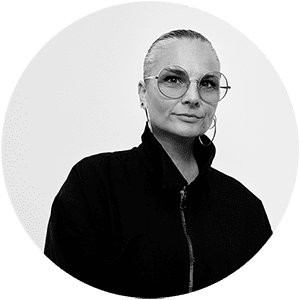
Review our webinar: Defining the new brand journey with creative brand agency Mørch & Rohde
6 takeaways from our webinar: Defining the new brand journey with creative brand agency Mørch & Rohde
Tackling the same topics of how the internet, social media, globalization, and digitalization changed the game, we invited Mørch & Rohde, a successful Danish strategic and creative agency that offers 360-degree branding, communication, concept development, SoMe, and PR solutions for Scandinavian and international fashion/lifestyle brands. Their clientele includes notable labels such as IRO, ba&sh, Martin Asbjørn, SAND, and Arne Aksel to name a few.
Our co-founder Jens Hamborg Koefoed sat down with Lotte Mørch Monchamp and Sarah Rohde Olsen, respectively Co-founder/Creative Director, and Co-founder/CEO of Mørch & Rohde to discuss how they help brands obtain a unique and strong market position in Scandinavia, cover the evolution of influencer marketing and classic PR, advise on how to implement a successful PR and content-based strategy.
1. Create a brand identity that you can convey on different channels
Brands are living organisms with their own personality, we need to convey the brand stories through different channels and help them do content, and that’s something you can’t do if you don’t understand the purpose of the brand. It’s important because the end-users nowadays don’t just buy a dress, they buy into a community.
Back in the days you could rely on a few editors and print magazines but now you have to create content for Instagram, TikTok, retailers, etc…Having a clear story and a red thread across different channels is important to maintain authenticity, especially with younger consumers who are so informed. There’s a huge need for content constantly and it’s much higher than just a few years ago.
2. Brand discovery became more democratic but more touch points need to be covered
Previously it was only the printed press, key editors, and buyers that were invited to the runway shows and determined the success of a brand. Today it’s more democratic, there’s a large crowd that can actually make a brand successful. It’s somehow good for the industry but also difficult for a brand because there are many touch points and people have to be convinced about a brand’s uniqueness. Instagram, YouTube, web-shop, retailers, wholesalers, print/online magazines, and content creators all need a different brief which translates in different ways. A tendency we see a lot is to also prioritize the budget to different channels and a lot of brands are spending or allocating more budget to content shoots.
3. Content plays an important role and has to be constantly updated
Before, a brand would sell with a nice printed catalog or lookbook. Today, it’s completely different – most brands use social media and that’s why the content for social media is so important. The first thing people will do is look into your Instagram, so the top 9 pictures are the DNA of the brand. The content needs to develop in this sense. Social media needs to be updated every day, so you need a lot of content for those platforms and create more shoots to build content for a brand. Cropping of the images is also significant, you need different types of images for different channels so a lot of times the assets produced come in hundreds.
It’s also very important that you create authentic pictures and images – for example, behind-the-scenes content is interesting for the end-user. Of course, it’s important to use classic campaign images. But it’s impactful to create images to build a community, you don’t sell a product you sell a story. Mørch og Rohde has a team to do behind the scenes, and a videographer to do shoots for social media every month.
4. Find the right brand ambassadors and trust the ones you choose to collaborate
Find the relevant brand ambassadors, a lot of your time should be dedicated to finding the relevant people for brands to work with. There needs to be a strategic fit, for the content created with the influencer to be authentic. Without the strategic fit, the follower will be confused as to why those two are working together.
Think about the purpose of your influencer campaign, brands often come up with a list of demands like: they need to drive sales, build a community, help with a new brand positioning, and that the specific influencer is followed by specific people, etc… But you can’t have it all, and you need to assess what the campaign is for. Some campaigns are to drive sales, some are made to drive brand awareness to enter a certain market. Having a purpose behind your influencer campaign is crucial. Have a strategic talk before choosing your brand ambassadors.
Give them creative freedom and trust, brands need to make sure they have trust in the influencer they pick. The influencer knows their platform the best and engages with their followers every day. Don’t be scared to give control to a content creator, because it’s a partner that will convey your brand message through their platform in their own best way.
5. Physical events create beautiful moments and worthwhile content
Gather your community, you can do a lot of cool activation online and drive a lot of engagement and sales for webshops but being able to showcase your brand universe in a physical setting is of course something different. To invite press and influencers and create cool experiences for the consumer where they can be a part of your community and brand story is very valuable. Of course, it is still important to work with both digital and physical strategies as they often go together. If you create an amazing physical experience, that’s also where you will see a lot of beautiful content materialize.
Physical events make great content, when brands do events, we always ask if this event is instagrammable; is it worth taking out a phone to take pictures? Think of Jacquemus and his beautiful shows and see how much content came out of that, you still see those pictures popping in your Instagram feed. So it’s still important to work with these physical channels because they can have a huge effect on digital awareness as well.
Only host events with a purpose, before the pandemic we saw a lot of events, now brands must know that they should never host an event if there’s no purpose behind it. The press, influencers, and stylists are invited to so many, if you are hosting an event just to have one don’t do it, just use that budget for a content shoot instead. Everyone is so busy, so you need to have something to offer and meaning behind your event.
6. Scandinavia is ahead of the digital game
Printed media is still important in the Scandinavian market, but there aren’t that many left. If you only rely on stories that go in printed media it limits your brand awareness. Some international brands are still very focused on the printed media landscape but it’s not the only channel we work with, if you want to be a big player here you need to tap into several ones.
This development hit our markets much faster than bigger markets like France and Germany. Instead, brands should focus on finding the right local players to work it to gain brand awareness. Find the right influencers, open up a pop store, and collaborate with artists that share the same brand values to spread the brand story in the Nordics.
Meet our experts
Lotte Mørch Monchamp – Founder and CEO of the sales agency Mørch, and Co-Founder and Creative Director of Mørch & Rohde
She has worked in the fashion industry for more than two decades and is known in the industry for her ability to introduce international fashion brands to the Scandinavian market. In Mørch & Rohde, Lotte oversees all creative processes and advises brands on how to develop a strong visual identity, where she combines creative thinking with a commercial mindset.
Sarah Rohde Olsen – Co-Founder and CEO of Mørch & Rohde
She has a background in consulting and is a subject matter expert in positioning and brand strategy. Her specialty is further in Influencer Marketing, where she advises brands on working with Influencers from a strategic perceptive and is also the agent of Josefine Hj.
Let’s get digital
Digitalization is at the forefront of the conversation about what is changing in the fashion industry. The need for brands to have an online presence and operate business digitally has been continuously rising, especially over the past few seasons. Meeting and sharing content online became even more integral for brands due to the restrictions that we have collectively experienced over the course of the pandemic, but the trend of brands moving into a more digital universe had been occurring before this. This shift is therefore undoubtedly changing the blueprint and make-up of industry events, shows, and fairs. Learn more about the VOCAST image bank feature here: https://vocast.com/digital-showroom.
Ines is the Research and Marketing Manager at VOCAST. She previously worked in the beauty industry and is now an expert in social media and digital marketing. Every day she helps design-driven brands navigate digital trends and carry out their marketing and brand strategies effortlessly.







